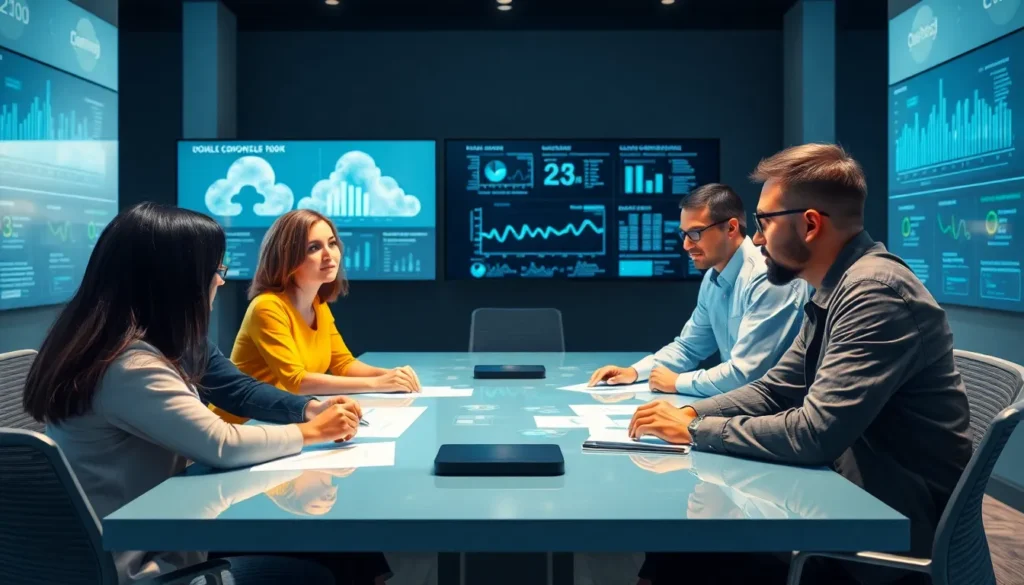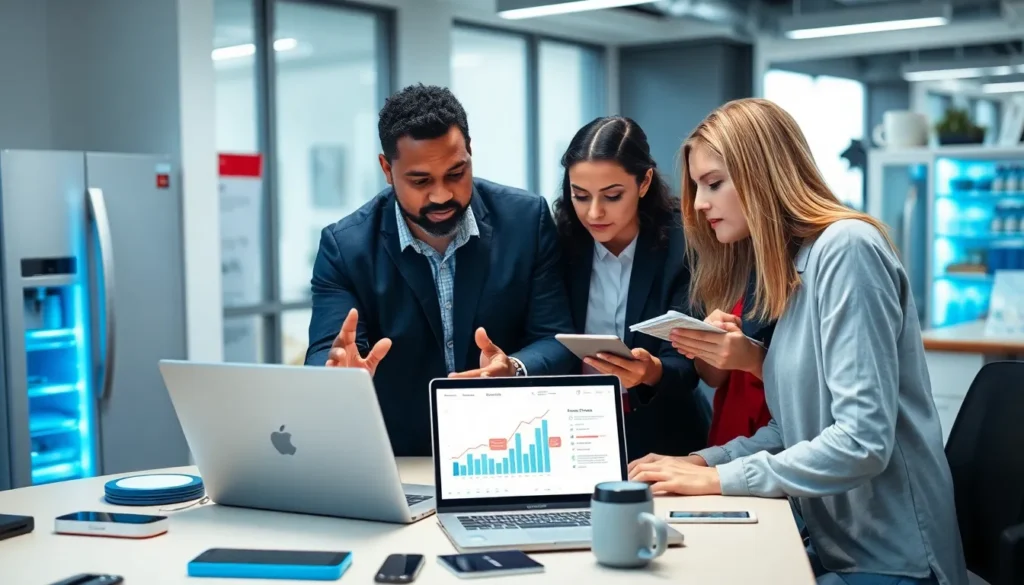Table of Contents
ToggleIn today’s fast-paced world, juggling emails across multiple devices can feel like a circus act. Imagine trying to keep track of your Gmail on your iPhone while your laptop is doing its best impersonation of a sloth. It’s enough to make anyone want to pull their hair out! But fear not, syncing Gmail across your devices is easier than finding a cat video on the internet.
Importance Of Syncing Gmail
Syncing Gmail across devices enhances user experience significantly. Accessing emails seamlessly allows individuals to stay connected regardless of the device in use. Notifications, calendar events, and emails synchronize in real time, ensuring timely responses.
Staying organized becomes easier with consistent updates across devices. Users can manage inboxes on an iPhone, laptop, or desktop without missing essential communications. The convergence of information allows for streamlined interactions, promoting efficiency.
Relying on synced Gmail helps prevent the loss of important emails. One missed message can lead to missed opportunities, making consistent updates crucial. Keeping all devices in sync minimizes confusion about the email’s status or actions taken.
Utilizing features like Google’s priority inbox becomes more effective too. Users can focus on high-priority emails, making them less likely to overlook critical correspondence. Enhanced productivity results from having all essential information at one’s fingertips.
Staying updated also fosters collaboration on shared projects. Team members can coordinate schedules through shared calendars, improving teamwork. Maintaining synchronized tasks and emails contributes to a more organized work environment.
Syncing Gmail helps maintain security as well. Users can enable two-factor authentication across devices, adding an extra layer of protection. Secured access prevents unauthorized users from viewing sensitive communications.
Overall, it’s clear syncing Gmail across devices offers numerous advantages. Improved efficiency, organization, collaboration, and security stem from seamless accessibility. Adopting this practice leads to a better way of managing emails in today’s fast-paced world.
Steps To Sync Gmail On iPhone
Syncing Gmail on an iPhone enhances email management with real-time access. Follow these steps for seamless integration.
Setting Up Gmail Account
To begin syncing, open the “Settings” app on the iPhone. Scroll down and select “Mail,” then tap on “Accounts.” Choose “Add Account,” and select “Google.” Enter your Gmail address and password when prompted. Allow the necessary permissions for syncing. Once complete, your emails, calendar, and contacts will automatically sync with the device. Verify that your Gmail account shows up in your list of accounts under “Mail” settings.
Adjusting Sync Settings
Adjusting the sync settings ensures optimal functionality. Tap on your Gmail account in the “Accounts” list. Here, you’ll find options to enable or disable specific features like Mail, Contacts, Calendars, and Notes. Select the desired features to sync. The “Fetch New Data” option allows users to set sync frequency. Choose “Push” for real-time updates or “Fetch” to control frequency based on personal preference. Adjusting these settings maintains efficient organization and access to emails across devices.
Troubleshooting Common Sync Issues
Syncing Gmail across devices can sometimes encounter issues. Common problems include connection difficulties and account configuration errors. Addressing these matters promptly enhances the overall experience.
Connection Problems
Connection issues can disrupt Gmail synchronization. First, check Wi-Fi or cellular data settings. An unstable or weak connection may hinder sync functionality. Restarting the router or switching to a different network might resolve connectivity problems. Additionally, ensuring that the iPhone doesn’t have airplane mode enabled helps maintain connectivity. If problems persist, updating the iOS software can fix bugs impacting the device’s performance. Verifying that Gmail servers are operational can also clarify any widespread issues affecting multiple users.
Account Configuration Errors
Misconfigured account settings often lead to sync failures. Users should double-check their login credentials for accuracy. An incorrect password or email address can prevent proper syncing. Reviewing the settings in the “Mail” section of the iPhone’s “Settings” app may uncover configuration lapses. Ensuring that all necessary permissions are granted allows Gmail to sync seamlessly. One must also look for specific sync settings that could be turned off, such as Mail, Contacts, or Calendars. Correcting these settings enhances email management across all devices.
Tips For Optimizing Gmail Sync
Adjust sync frequency settings to ensure timely updates. Users can set preferred intervals for Gmail syncing, such as every 15 minutes, 30 minutes, or manually. Keeping a consistent update schedule enhances email management and prevents missed communications.
Check Wi-Fi and cellular connections regularly to maintain seamless syncing. An unstable network can lead to delays or interruptions in email access. Restarting the router or switching between Wi-Fi and cellular data can help resolve connection issues quickly.
Verify account permissions in the iPhone’s Settings app. Ensuring that Mail, Contacts, and Calendars are enabled allows for smooth integration across devices. Users can navigate to Accounts & Passwords, select their Gmail account, and confirm that the necessary permissions are granted.
Clear the Gmail app cache occasionally to improve performance. Over time, cached data may slow down the app and affect syncing. By uninstalling and reinstalling the app, users can refresh it and optimize functionality.
Keep iOS software updated to enhance overall device performance. Regular system updates often include compatibility fixes for apps, ensuring they function correctly. Users should navigate to Settings, then General, and select Software Update to check for any available updates.
Utilize Google’s priority inbox feature for better email organization. This setting helps users focus on high-priority emails first. Activating this function streamlines the inbox, making it easier to stay on top of important communications.
Implement two-factor authentication for added security across devices. This feature protects sensitive information by requiring a second verification step when logging into Gmail. Users can enable two-factor authentication through their Google Account settings for enhanced protection.
Adopting these practices significantly improves Gmail synchronization on iPhone devices.
Syncing Gmail across devices like an iPhone is essential for maintaining organization and efficiency in today’s busy world. By following the outlined steps and tips, users can enjoy real-time access to their emails and calendar events, ensuring they never miss important communications.
Troubleshooting common sync issues and optimizing settings can further enhance the experience, making email management seamless. With the right approach, users can transform their Gmail experience into a well-coordinated and secure operation that boosts productivity and fosters collaboration. Embracing these practices will lead to a more streamlined and effective way to handle emails across all devices.







